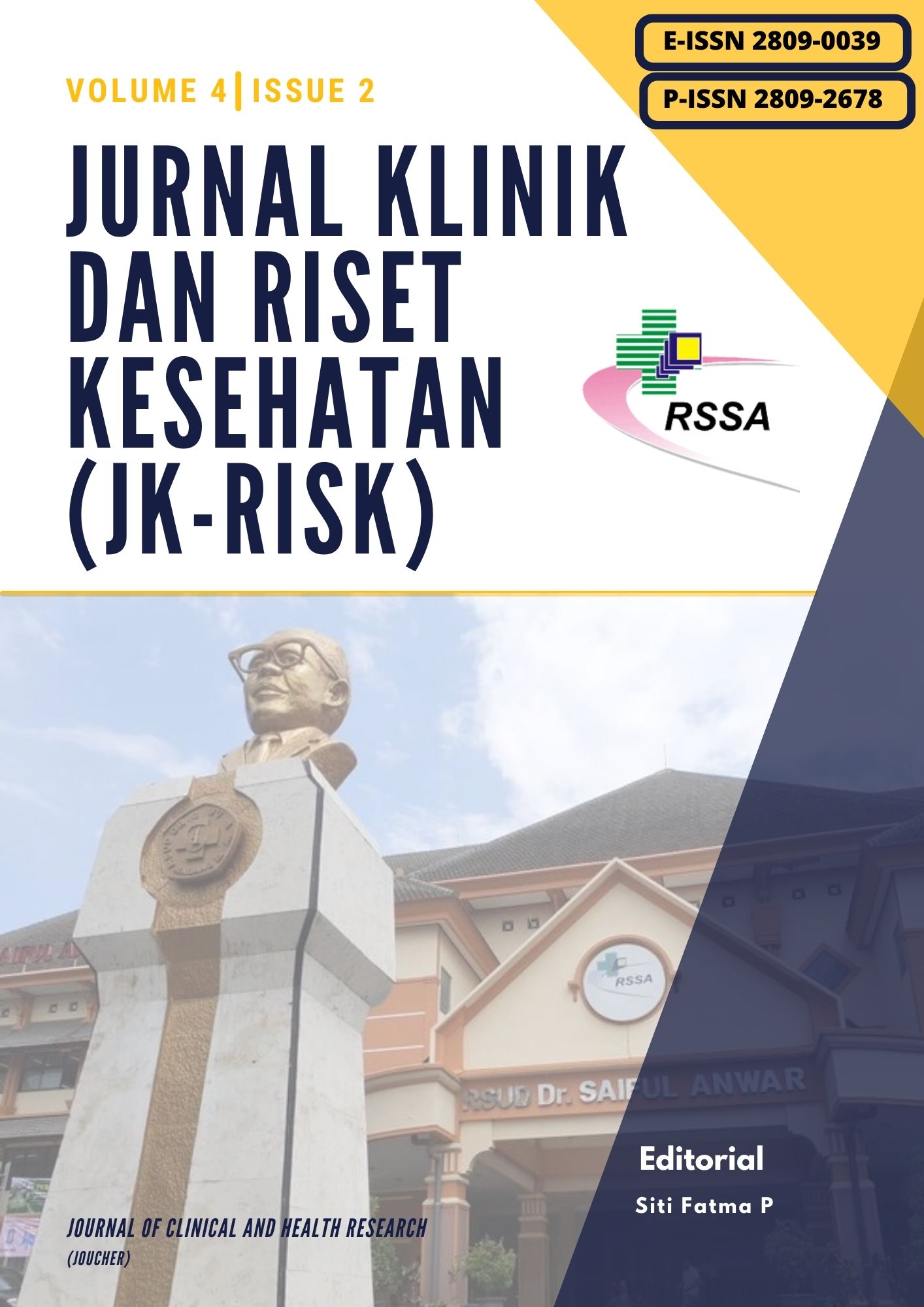The Role of Supervised Exercise Therapy of People With Lower Extremity Peripheral Artery Disease
DOI:
https://doi.org/10.11594/jk-risk.04.2.6Keywords:
peripheral arterial disease, claudicatio intermitten, rehabilitation, supervised exercise trainingAbstract
Peripheral arterial disease is a disorder caused by decreased blood flow to the extremities. The process of atherosclerosis generally causes it and manifests as claudication. In addition to optimal medical and endovascular therapy, non-pharmacological management of PAP has been proven to be effective in reducing symptoms and improving walking ability and quality of life. Walking exercise can increase blood flow, which allows oxygen and nutrients to reach the muscles more efficiently and triggers the angiogenesis process. Supervised exercise programs in PAP patients are considered important as primary therapy to improve functional capacity and quality of life for long-term management.
Downloads
References
Norgren L, Hiatt WR, Dormandy JA, Nehler MR, Harris KA, Fowkes FG, et al. TASC II inter-society consensus for the management of pe-ripheral arterial disease. Eur J Vasc Endovasc Surg 2007;33(1):S1-75. DOI: https://doi.org/10.1016/j.ejvs.2006.09.024
Hirsch AT, Haskal ZJ, Hertzer NR, Bakal CW, Creager MA, Halperin JL, et al. ACC/AHA 205 practice guidelines for the management of pa-tients with peripheral arterial disease (lower extremity, renal, mesenteric, and abdominal aortic). Circulation 2006;113:e463-e654. DOI: https://doi.org/10.1161/CIRCULATIONAHA.106.174526
Mardiansyah. Data rekam medis Pusat Jantung Nasional Harapan Kita. Jakarta; 2012.
White, C. Intermitten claudication. NEJM 2007;356:1241-1250. DOI: https://doi.org/10.1056/NEJMcp064483
Murphy TP, Cutlip DE, Regensteiner JG, Mohler ER, Cohen DJ, Reynolds MR, et al. Supervised exercise versus primary stenting for claudication resulting from aortoiliac peripheral artery disease : six-month outcomes from the claudication: exercise versus endoluminal revascularization (CLEVER) study. Circulation 2012;125:130- 139. DOI: https://doi.org/10.1161/CIRCULATIONAHA.111.075770
Stewart KJ, Hiatt WR, Regensteiner JG, Hirsch AT. Exercise training for claudication. NEJM 2002;347(24):1941-1950. DOI: https://doi.org/10.1056/NEJMra021135
Tendera M, Aboyans V, Bartelink M-L, Baum-gartner I, Clement D, Collet J-P, et al. ESC guidelines on the diagnosis and treatment of peripheral arterial diseases.
European Heart Journal 2011; 32(22):2851- 2906. Milani RV, Lavie CJ. The role of exercise training in peripheral arterial disease. Vasc Med 2007;12:351-358. DOI: https://doi.org/10.1177/1358863X07083177
Halliday A, Bax JJ. The 2017 ESC guidelines on the diagnosis and treatment of peripheral arterial diseases, in collaboration with the European Society for Vascular Surgery (ESVS). European journal of vascular and endovascular surgery. 2018 Mar 1;55(3):301-2. DOI: https://doi.org/10.1016/j.ejvs.2018.03.004
Rooke TW, Hirsch AT, Misra S, Sidawy AN, Beckman JA, Findeiss LK, et al. 2011
ACC/AHA Focused update of the guidelines for the management of patients with peripheral arterial disease (updating the 2005 guideline). Circulation 2011; 124:2020- 2045.
Parr BM, Derman EW. The effect of exercise training in patients with peripheral vascular disease-a review. SAJSM 2006;18(4):116-121. DOI: https://doi.org/10.17159/2078-516X/2006/v18i4a233
Watson L, Ellis B, Leng GC. Exercise for inter-mitten claudication. Cochrane Database Syst Rev 2008;4:1-55. DOI: https://doi.org/10.1002/14651858.CD000990.pub2
McDermott MM, Ades P, Guralnik JM, et al: Treadmill exercise and resistance training in patients with peripheral arterial disease with and without intermittent claudication: a ran-domized controlled trial. JAMA 2009;301:165-170.
Spronk S, Bosch JL, Veen HF, Hoed PT, Hunink MGM. Intermitten claudication: functional ca-pacity and quality of life after exercise training or percutaneous transluminal angioplasty-systematic review. RSNA 2005;235:833-842. DOI: https://doi.org/10.1148/radiol.2353040457
Spronk S, Bosch JL, Veen HF, Hoed PT, Pat-tynama PMT, Hunink MGM. Intermitten claudication: effectiveness of endovascular revascularization versus supervised hospital- based exercise training-randomized controlled trial. RSNA 2009;250(2):586-595. DOI: https://doi.org/10.1148/radiol.2501080607
Hiatt WR, Wolfel EE, Meier RH, Regensteiner JG. Superiority of treadmill walking exercise versus strength training for patients with pe-ripheral arterial disease. Implications for the mechanism of the training response. Circula-tion 1994;90:1866- 1874. DOI: https://doi.org/10.1161/01.CIR.90.4.1866
Hamburg NM, Balady GJ. Exercise rehabilita-tion in peripheral artery disease : functional impact and mechanism of benefits. Circulation 2011; 123:87-97. DOI: https://doi.org/10.1161/CIRCULATIONAHA.109.881888
Stewart KJ, Ratchford EV, Williams MA. Exer-cise for restoring health and preventing vascu-lar disease. In : Blumenthal RS, Foody. JM, Wong ND, editors. Preventive cardiology: a companion to braunwald’s heart disease. Phil-adelphia. Elsevier Saunders;2011:541-551. DOI: https://doi.org/10.1016/B978-1-4377-1366-4.00033-0
Treat-Jacobson D, McDermott MM, Beckman JA, Burt MA, Creager MA, Ehrman JK, Gardner AW, Mays RJ, Regensteiner JG, Salisbury DL, Schorr EN. Implementation of supervised exercise therapy for patients with symptomatic peripheral artery disease: a science advisory from the American Heart Association. Circulation. 2019 Sep 24;140(13):e700-10 DOI: https://doi.org/10.1161/CIR.0000000000000727
Downloads
Published
Issue
Section
License
Authors who publish with this journal agree to the following terms:
- Authors retain copyright and grant the journal the right of first publication with the work simultaneously licensed under a Creative Commons Attribution License that allows others to share the work with an acknowledgement of the work's authorship and initial publication in this journal.
- Authors can enter into separate, additional contractual arrangements for the non-exclusive distribution of the journal's published version of the work (e.g., post it to an institutional repository or publish it in a book), with an acknowledgement of its initial publication in this journal.
- Authors are permitted and encouraged to post their work online (e.g., in institutional repositories or on their website) before and during the submission process, as it can lead to productive exchanges and earlier and greater citation of published work (See The Effect of Open Access).

















